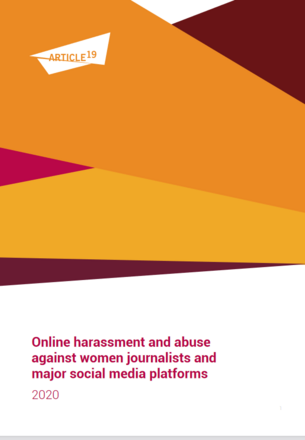
Women journalists face a distinct set of risks in carrying out their work. Although digital technologies have created new opportunities for women journalists and activists to communicate and organise, they have also reproduced patterns of harassment that women journalists face in their work.
Online harassment and abuse of women journalists have become more prominent and more coordinated in recent years and can occur on the basis of their reporting, or purely on the basis of being women operating in the public sphere. The objective of these types of attacks is to silence, stigmatise and intimidate women journalists.
In this briefing, ARTICLE 19 examines how three dominant social media companies – Facebook, Twitter and Youtube – have responded to calls to address various forms of gender-based harassment and abuse in their community guidelines and practices. However, ARTICLE 19 is very mindful of the wider context of the problem of online gender-based harassment and abuse and the role of other players in the wider Internet ecosystem, such as private messaging services.
The briefing first examines what are the responsibilities of the major/ dominant social media companies under human rights standards and how they implement their responsibilities in their community guidelines and practices.
The briefing highlights the positive and negative aspects of these tools and approaches, and provides recommendations for improvement.
Tags: Harassment Online news Online media Safety of journalistsThe content of this article can be used according to the terms of Creative Commons: Attribution-NonCommercial 4.0 International (CC BY-NC 4.0) . To do so use the the wording "this article was originally published on the Resource Centre on Media Freedom in Europe" including a direct active link to the original article page.

